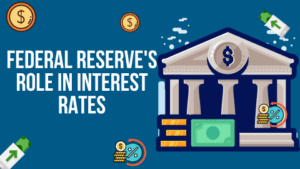Mortgage Rate Trends: Navigating the Coachella Valley Market
Staying abreast of mortgage rate trends in the ever-evolving housing market is essential for prospective home buyers in the Coachella Valley to make informed decisions. This comprehensive guide will delve into key factors influencing mortgage interest rates and how they impact your home-buying journey.
We will explore the significance of the 10-year treasury bond yield in determining residential mortgage rates and examine first-quarter GDP results and their influence on interest rates. Additionally, we’ll discuss how core PCE announcements serve as a vital indicator monitored by the Federal Reserve when evaluating mortgage rate trends.
Credit scores are essential in obtaining favorable loan pricing; therefore, understanding Loan Level Price Adjustments (LLPAs) can significantly benefit borrowers with varying credit standings. Furthermore, we’ll touch upon recent changes in LLPAs and how political issues may affect adjustments for credit scores.
Lastly, protecting your privacy during home loan applications should be a top priority. We will provide valuable insights on three-bureau hard inquiry reports and explain how opting out of prescreened trigger leads can help you avoid harassment from other lenders while navigating through these complex mortgage rate trends.
Mortgage Rate Trends and Economic Data
When it comes to understanding mortgage rates, several key economic indicators can help you make informed decisions about home loans or refinancing your current mortgage. This section will discuss the significance of the 10-year treasury bond yield, first-quarter GDP results, and core PCE announcement in determining residential mortgage interest rates.
The Significance of the 10-Year Treasury Bond Yield in Determining Residential Mortgage Rates
The 10-year treasury bond yield is a crucial benchmark for fixed-rate mortgages as it reflects investor confidence in long-term U.S. government debt. When yields rise, lenders typically increase their interest rates on new loans to maintain profitability. Conversely, lenders may lower mortgage rates when yields fall to attract more borrowers.
A recent report by the Mortgage Bankers Association (MBA) showed an uptick in both purchase applications and refinance activity due to lower mortgage rates resulting from declining treasury yields. It’s essential for potential home buyers and those looking to refinance their existing mortgages to monitor these trends closely.
First-Quarter GDP Results and Their Influence on Interest Rates
Gross Domestic Product (GDP) growth is another significant factor influencing mortgage interest rates forecast. A strong economy usually leads to higher inflation expectations which prompt central banks like the Federal Reserve to raise short-term interest rates – ultimately affecting adjustable-rate mortgages.
In contrast, weaker economic growth can lead central banks like the Fed to lower short-term interest rates – leading to lower mortgage rates. According to Fannie Mae, the U.S. The strong first quarter of 2023 could indicate a potential rise in interest rates later this year.
Core PCE Announcement as a Key Indicator Monitored by the Federal Reserve
The Personal Consumption Expenditures (PCE) index is another essential economic indicator that affects mortgage rate trends. The core PCE announcement measures inflation and excludes volatile food and energy prices, making it a preferred gauge for the Federal Reserve.
Higher Core PCE: When core PCE increases, it signals rising inflationary pressures, which may lead the Fed to raise short-term interest rates – resulting in higher adjustable-rate mortgages.
Lower Core PCE: A decrease in core PCE indicates low inflation levels, prompting central banks like the Fed to lower short-term interest rates – leading to lower mortgage rates.
To stay informed about current market conditions and make well-informed decisions on home loans or refinancing your existing mortgage, keep an eye on these key economic indicators: 10-year treasury bond yield movements, GDP growth data releases, and core PCE announcements from the Federal Reserve.
Economic data heavily influence mortgage rate trends, and credit scores can also play a role in obtaining favorable loan pricing. Understanding the implications of recent changes in LLPAs is essential for borrowers to make informed decisions about their mortgage loans.
Key Takeaway:
Understanding mortgage rate trends involves monitoring key economic indicators such as the 10-year treasury bond yield, first-quarter GDP results, and core PCE announcement. The movement of these indicators can influence fixed-rate mortgages and adjustable-rate mortgages in different ways, with rising yields leading to higher interest rates while falling yields may result in lower mortgage rates. To make informed decisions about home loans or refinancing existing mortgages, it’s important to stay updated on these trends.
Mortgage Rate Trends and Economic Data
Understanding the factors influencing mortgage rates is crucial for homebuyers in the Coachella Valley. This section will discuss three key economic indicators that impact mortgage interest rates: the 10-year treasury bond yield, first-quarter GDP results, and core PCE announcement.
The significance of the 10-year treasury bond yield in determining residential mortgage rates
The 10-year treasury bond yield is a major factor in setting residential mortgage interest rates, as it reflects investors’ sentiment toward the economy. Mortgage lenders often use it as a benchmark to set their loan pricing since it reflects investors’ confidence in the economy. When yields rise, so do fixed-rate mortgages like 30-year loans; conversely, lower mortgage rates typically follow when yields fall.
First-quarter GDP results and their influence on interest rates
Gross Domestic Product (GDP) measures overall economic activity within a country during a specific period. The first quarter’s GDP data can significantly impact interest rate trends because higher-than-expected growth may prompt central banks such as the Federal Reserve to raise short-term lending costs or tighten monetary policy. Conversely, weaker growth could lead to more accommodative policies to stimulate buyer demand through lower borrowing costs for adjustable-rate mortgages and other types of loans.
Federal Reserve’s Role in Interest Rates
Fannie Mae: A government-sponsored enterprise (GSE) responsible for purchasing conventional mortgages from large lenders across America.
Mortgage Bankers Association: An organization representing various stakeholders involved with real estate finance, including multiple lenders such as commercial banks and credit unions.
Chief Economist: A professional who studies and predicts economic trends, often working for financial institutions or government agencies like the Federal Reserve.
Core PCE announcement as a key indicator monitored by the Federal Reserve
The Personal Consumption Expenditures (PCE) index is an important inflation gauge that helps guide monetary policy decisions. The core PCE excludes volatile food and energy prices to provide a more stable measure of underlying inflationary pressures. When this figure rises above the Fed’s target range, it may signal tighter credit conditions ahead due to higher interest rates being implemented in response. Homebuyers should monitor these announcements closely since they impact mortgage interest rate forecasts directly.
In summary, keeping an eye on economic indicators such as 10-year treasury bond yields, GDP data, and core PCE announcements can help homebuyers decide when to lock in their mortgage rates or consider refinancing options based on prevailing market conditions. Lower mortgage rates can benefit first-time homebuyers and those looking to tap into their home equity. Homebuyers can take advantage of favorable mortgage rate trends by staying informed about the housing market and working with reputable mortgage lenders.
Credit scores and loan level price adjustments (LLPAs) are a crucial part of the home loan process, as they determine whether borrowers receive favorable terms. To protect your privacy during this process, it is important to understand how pre-screened trigger leads may affect you.
Key Takeaway:
Understanding economic indicators such as the 10-year treasury bond yield, first-quarter GDP results, and core PCE announcement can help homebuyers decide when to lock in their mortgage rates or consider refinancing options based on prevailing market conditions. The Federal Reserve’s role in interest rates is also crucial to monitor since it directly impacts mortgage interest rate forecasts. Keeping an eye on these factors can help take advantage of favorable mortgage rate trends.
Protecting Your Privacy During Home Loan Applications
When applying for a home loan, it’s essential to safeguard your personal information and avoid unsolicited marketing calls from other lenders who might have access to your data through trigger leads sold by credit bureaus. This section will look at strategies to preserve your privacy while going through the mortgage application procedure.
How Three-Bureau Hard Inquiry Reports Create Potential Privacy Concerns
A hard inquiry report, also known as a credit pull, is conducted by mortgage lenders when you apply for a home loan. The three main credit agencies, Experian, Equifax and TransUnion, receive these hard inquiry reports. Unfortunately, these bureaus may sell your information as trigger leads to other lenders or companies looking for potential customers.
This practice can lead to an influx of unwanted marketing calls from multiple lenders trying to offer their services. To protect yourself from such harassment while maintaining control over who has access to your sensitive financial information during the home-buying process, consider taking some proactive steps.
Opting Out of Pre-Screened Trigger Leads to Avoid Harassment from Other Lenders
Contact each credit bureau: Reach out directly via phone or online forms provided on their websites (Equifax Opt-Out Request Form, TransUnion Marketing Offers Opt-Out Page, and Experian Opt-Out Help Page) to request that they stop selling your information as trigger leads.
Opt out of pre-screened offers: You can opt out of receiving prescreened credit and insurance offers for five years or permanently by visiting the official Consumer Credit Reporting Industry’s Opt-Out website. This action will help reduce the number of unsolicited calls and mailings you receive from lenders who are not part of your home loan application process.
Consider a mortgage broker: Working with a reputable mortgage broker, such as MortgageWorks, can provide an added layer of privacy protection. A broker will shop around on your behalf among various lenders to find the best rates and terms without exposing your personal information to multiple parties.
In conclusion, protecting your privacy during home loan applications is crucial in avoiding unwanted marketing calls from other lenders while ensuring that only authorized parties can access sensitive financial data. By taking proactive steps like opting out of pre-screened trigger leads and working with a trusted mortgage professional, you’ll be better equipped to navigate the housing market confidently and securely.
Key Takeaway:
Protecting your privacy during home loan applications is essential to avoid unsolicited marketing calls from other lenders. Three-bureau hard inquiry reports can create potential privacy concerns, but you can opt out of pre-screened trigger leads and work with a reputable mortgage broker like MortgageWorks to provide an added layer of privacy protection.
FAQs in Relation to Mortgage Rate Trends
How are mortgage rates trending?
Mortgage rates have been fluctuating in recent months due to various economic factors. While it’s difficult to predict exact trends, monitoring indicators like the 10-year treasury bond yield, GDP results, and Core PCE announcements can provide insights into potential rate changes.
Will mortgage interest rates go down in 2023?
It is challenging to accurately forecast mortgage interest rates for 2023. However, one can make informed decisions when planning a home purchase or refinance by keeping an eye on key economic data and announcements from the Federal Reserve. For up-to-date predictions, refer to reputable sources such as Bankrate’s Mortgage Rate Forecast.
Are interest rates going up or down in 2023?
Predicting whether interest rates will rise or fall in 2023 depends on multiple factors, including inflationary pressures and central bank policies. Stay updated with credible financial news outlets like MarketWatch for real-time information on market trends that may impact future rate movements.
Mortgage Interest Rate Predictions:
Fannie Mae: Average fixed-rate of around 2.9% – 30-year mortgages through Q4 of 2023
MBA (Mortgage Bankers Association): Average fixed-rate of around 3.5% – 30-year mortgages by Q4 of 2023
NAR (National Association of Realtors): Average fixed-rate to rise gradually, reaching approximately 3.0% in late-2023.
Zillow: Rates are likely to remain low through the end of the year, with modest increases in early-2023.
What are the mortgage interest rate predictions?
Mortgage interest rate predictions vary among experts and organizations. Some anticipate relatively stable rates, while others expect gradual increases throughout 2023. For a comprehensive overview, consult sources like Fannie Mae’s monthly economic outlook or Zillow’s market analysis for their latest forecasts.
Conclusion
In conclusion, keeping an eye on economic data such as the 10-year treasury bond yield, first-quarter GDP results, and Core PCE announcements can help predict mortgage rate trends. Additionally, borrowers should be aware of how their credit score affects loan pricing and recent changes in LLPAs. It is also crucial to protect privacy during home loan applications.
Overall, being aware of these elements can help potential home purchasers make educated choices regarding when to buy a residence and which kind of loan to take out. If you’re looking for a reliable lender with competitive rates and excellent customer service, check out MortgageWorks.



